|
|
 |
The Beluga Recognition Award
Patrick Meslin, 2024

As an expert marine geoscience technologist, Patrick Meslin finds creative ways to support of NRCan programs and those of other departments, providing novel computer and electronics support to staff and partners. He has become the go-to person for many an obscure technical issue, responding without complaint, always happy to help. It’s Patrick’s willingness to offer to help when things go wrong that raises him above the norm.
Whether you’re from GSCA, DFO or DRDC, use NavNet, the 4K camera or work with AUVs, from the BIO gardening committee, or if you’ve participated in the Parker Street food bank efforts by BIO – chances are you know Patrick Meslin.
As a volunteer organizer with the Parker Street Holiday Hamper Program he combines his formidable organizational skills with a passion for helping out in coordinating a mammoth effort of BIO staff, family and friends in what has become BIO’s largest and most important community effort.
In his central role on the BIO gardening committee for many years, Patrick has played a pivotal role in fostering a culture of environmental stewardship and community engagement. His passion for sustainable gardening practices has inspired fellow volunteers and contributed to the creation of a thriving green space that enriches our institution and strengthens our sense of community.
Whether at sea, in the lab or out in the community, Patrick Meslin is the embodiment of teamwork and community spirit at BIO.
|
Kelly Bentham, 2022
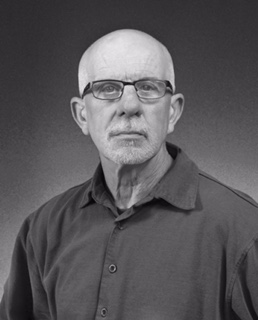
Kelly's decades of service are exemplary of the spirit of teamwork that the Beluga Award recognizes. As a photographer and caretaker of the BIO photo archives, Kelly straddled the film to digital transition, contributing to programs and initiatives in the field and the office, leading and supporting technological advancements in underwater photography and acting as a valuable resource for audio/visual aids in the Ford Auditorium and throughout the BIO Campus. He has been a fixture at countless Open Houses and a strong supporter of Oceans Association work documenting the visual history of BIO.
|
Dale Eliot Buckley, 2021
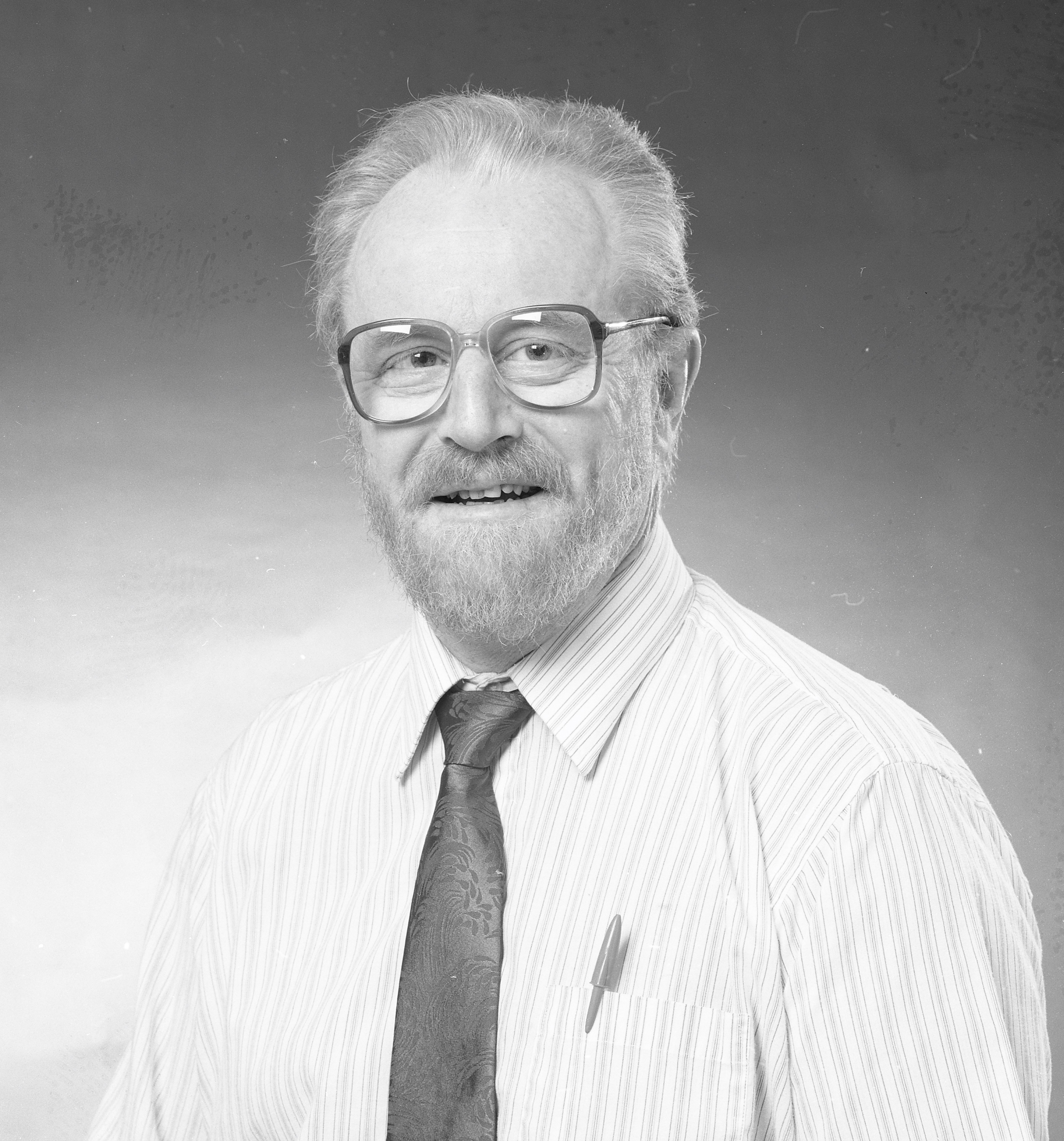
The BIO-OA Executive decided in 2020 that Dale Buckley would be honoured with a special Beluga Award in recognition of his work at BIO, the spirit he exhibited carrying out that work, and his role in establishing both the Oceans Association and the Beluga Award. He was most pleased when informed of this recognition, and looked forward to accepting the award at our usual ceremony, what was to be the 20th anniversary of the Beluga Award.
Because of the restrictions to combat Covid-19, our annual meeting and the award ceremony were postponed.
Most unfortunately, Dale passed away in early April 2020.
His obituary stated "his proudest achievement was the creation and sponsorship of the Beluga Award at BIO."
Peters Wells said about Dale: "During my early career at BIO in the 1970s, I would sometimes meet Dale in the halls and over lunch, always finding him willing to chat about his research and inquire about mine, despite our different specialties. He exemplified the exciting research atmosphere that existed at BIO in its early years, so important to new and younger investigators."
Lisa O'Neill said "Dale's kindness and support were always genuine and he encouraged me to become far more. His humour was always of great delight to me. Dale and I had years of back and forth practical jokes, always trying to outdo one another, and they became hilarious battles of creativity. I think, though, it was his generosity that was truly his trademark. I watched from the sidelines for a decade as he took students, colleagues, admin staff, mail room staff and cleaners under his wing and gave everyone a chance."
Dale's special Beluga Award was accepted by his wife Betty.
|
Shawn Roach, 2020

As a Benthic Systems Technician, Habitat Ecology Section, Coastal Ecosystem Science Division (CESD), Ecosystems and Oceans Science Sector, Shawn Roach provides technical and scientific support for many programs within and outside of the CESD, including but not limited to: mechanical maintenance and repairs of field gear; research and development of new field gear; small boat captain and fleet scheduling, maintenance and certifications; and certified scientific diver. He has also served as the employee co-chair for the Occupational Health and Safety Vulcan Jetty Fieldwork Committee (2013-2020), and was a recent member of the Beluga Award Selection Committee (2017-2019).
Despite his exceptional work skills, it is in the areas of cooperation and teamwork where Shawn really shines. His easy going, humorous and contagious persona is coupled with a genuine kindness and respect that invariably leads to a productive and fun-filled work environment. Some of the words used to describe Shawn in his letters of support include: willing, resourceful, capable, skilled, unselfish, enthusiastic, gifted, innovative, eager, creative, hardworking, industrious, dedicated, professional, diligent, responsive, engaged, caring and outgoing.
Shawn is also an engaged and active member of the BIO Community. He's been a volunteer with the Parker Street Food and Furniture Bank Christmas Hamper Program since 2004, he gives blood regularly at the BIO Red Cross blood clinic, he currently serves as a member of the Beluga Awards Selection Committee, he has volunteered at 3 BIO Open Houses and he's a regular contributor to World Oceans Day events. He has even taken his show on the road, giving multiple "Clean Water" talks with the HRM Girl Guides. Shawn is the Co-Chair of the Vulcan, Jetty and Fieldwork, Occupational Health and Safety Committee, which recently garnered him a "Maritimes Region DFO/CCG Occupational Health and Safety Award", in recognition of his dedication, commitment and exceptional contribution to safety on the BIO Campus.
As evident in the support letters accompanying his nomination, Shawn brings a unique and highly sought after combination of scientific knowledge, innovation, highly proficient field skills, exceptional work ethic, a strong safety first policy and an open, humorous and warm personality that makes everyone want to perform their best and be on his team. All the while, Shawn professionally manages the complex priorities of demanding clients. Clients walk away satisfied that their project received the attention and expertise that it deserved. This is evident by the ever expanding array of projects that he has supported throughout his career: shellfish husbandry and experimental support, benthic imaging gear maintenance and operations in support of deep sea coral and sponge conservation efforts, mesopelagic fishing gear design and sampling, fish community sampling in seagrass ecosystems, playing a pivotal role designing and building the mesocosm system, research in support of nearshore conservation planning, and vessel and field support for oceanographic programs. This is just a short list of some of the many, many projects which Shawn has supported. He is arguably the busiest and most sought after scientific technician in DFO Maritimes.
|
Dr. Ruth Jackson, 2019
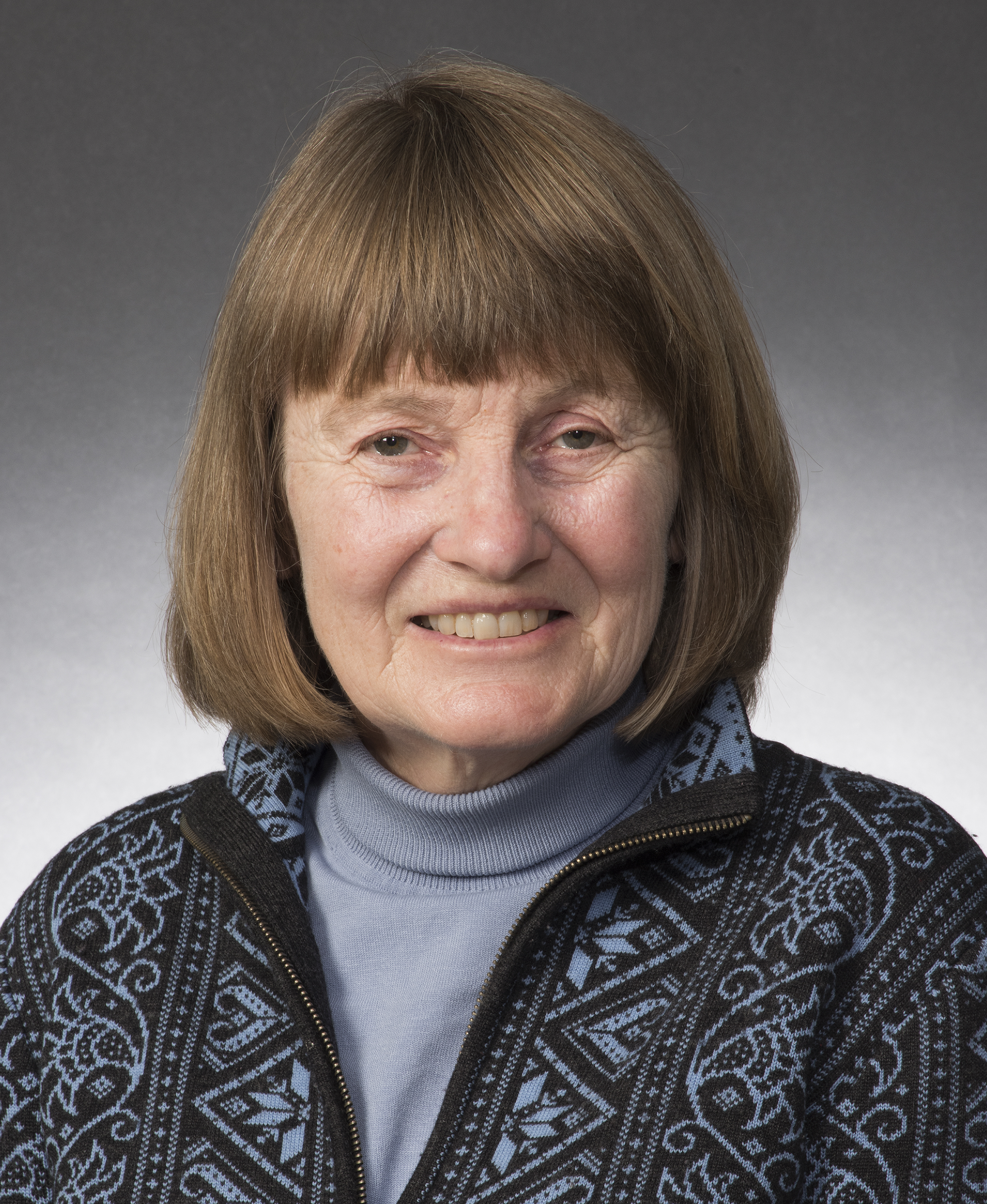
Introducing the 2019 Beluga Award winner, Dr. Ruth Jackson! Ruth is a Scientist Emerita and Arctic researcher with Natural Resources Canada. Although Ruth retired from the Geological Survey of Canada - Atlantic in 2009, she is still contributing to ongoing research at BIO and is see regularly around campus. Ruth is particularly engaged in the preparation of Canada's United Nations Convention on the Law of the Sea (UNCLOS) Arctic Submission.
Over the past four decades, Ruth has made contributions to many BIO projects and programs. Since the 1980s, she has participated in a variety of Arctic field programs. Ruth has been described as a scientific trailblazer, working during a time when women were just beginning to participate in research missions at sea. She later went on to lead programs and many international efforts to map and interpret Arctic geology. For much of the 2000s, she participated in the large multi-departmental and international efforts to map the offshore in preparation for Canada's Arctic UNCLOS submission. This UNCLOS work was highly multi-disciplinary and involved participants from other government departments, Arctic communities, contractors, academic and international partners.
Today, Ruth's contributions to BIO are visible through the new Bernard Pelletier Fossil Forest - a unique outreach display in BIO's main courtyard. This display communicates the concepts of evolution, Arctic geology and climate change in an experiential exhibit. The exhibit was Ruth's idea and her dedication to the project made it a reality. She continues to be involved in its care and operation.
As a result of Ruth's efforts and dedication to BIO and its community, we are proud to recognize Ruth as the 2019 recipient of the Beluga Award.
|
Andrew Cogswell, 2018

Andrew Cogswell is the Operational Coordinator for the
Atlantic Zone Monitoring Program (AZMP) and is part of Science's Ocean and Ecosystem Sciences Division at
the Bedford Institute of Oceanography (BIO). Andrew started his career as a Biologist with DFO's shellfish
biotechnology program and later worked with the benthic ecology program. In these roles, Andrew learned
about the value of team work and developed into a great team leader. In his fifteen years at BIO, Andrew
has shown an exceptional contribution to the success of BIO projects, initiatives, and the programs he has
worked on. These contributions exemplify his unselfish efforts that encourage cooperation and foster a team-work
approach, which is so important to BIO.
In addition to his outstanding efforts in his BIO science role, Andrew also positively impacts the greater
BIO and Halifax Regional Municipality communities. Andrew is well respected by his peers and management
staff throughout BIO. He is also known for his sense of humour and making the workplace fun.
As a result of Andrew's efforts and unselfish dedication to his work, to BIO and his community, we are proud to recognize
Andrew as this year's recipient of the Beluga Award.
|
Kate Jarrett, 2017
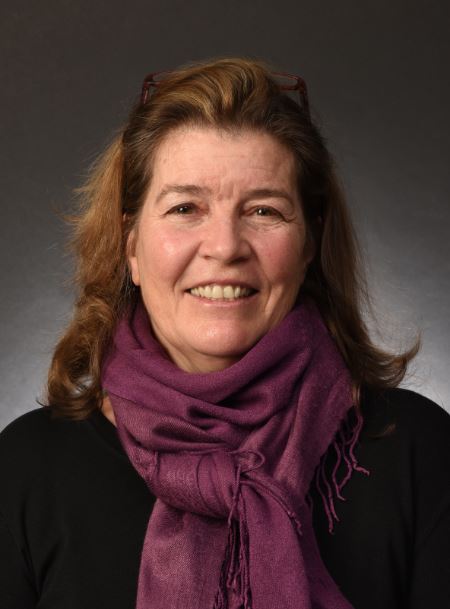
Kate Jarrett is the Marine Collections Curator for the Geological Survey of Canada, Atlantic (GSCA) at BIO. Throughout her career with GSCA, Kate has played a key role in the success of marine geoscience programs on all three of Canada's coasts. Her expertise in the collection and processing of marine sediment samples and associated data has been an essential component of GSC research cruises since the 1980s, and she continues to be an important player in all marine field programs led out of GSCA. Kate's main contribution has been her ongoing role as an unsung hero and team leader working in the background to ensure things run smoothly.
Managing the NRCan collections, and supervising staff, students and visitors are normal day-to-day activities for Kate but what is staggering is how she manages to fit in so many tasks on top of her very demanding job. Kate has been a long-time supporter of the Government of Canada Workplace Charitable Campaign (GCWCC); she has coordinated GSCA employee contributions for many years and has singlehandedly coordinated the BIO GCWCC Book Sale for the last several years. Kate produces the NRCan staff newsletter, Below the Waterline, on a quarterly basis which she completes at home on personal time. Kate is presently Laboratory Representative on the GSCA Occupational Health and Safety (OHS) Committee and GSCA observer on the DFO Ellis and Fish Lab OHS Committee. Kate leads OHS inspections for many GSCA labs and offices and also coordinates usage and documentation of thermoluminescent dosimeters for all GSCA staff working with radiation sources. Kate volunteers on the GSCA Outreach Committee and is usually the first to submit an exhibit for NRCan outreach activities.
For years Kate almost singlehandedly kept the GSC core facility running well, during times of restraint. Now she manages a team of people that have transformed this facility into a world class operation. Her efforts in doing this have routinely shown experience, diligence and great planning. Motivation could be her middle name.
In every job Kate does at BIO, she exemplifies an unselfish effort and by her positive outlook and high standard of performance she encourages cooperation and fosters teams to work together at every turn. Her efforts consistently over-deliver on demands. She is modest, unassuming, hardworking, and cheerful. It is one thing to put out a huge effort in a short time period but Kate Jarrett has been outperforming for more than two decades.
Because of these and many more efforts, we are proud to recognize Kate as this year's recipient of the Beluga Award.
|
Glen Morton, 2016

Glen is one of the unsung heroes of BIO. Most people at BIO have seen and admired equipment that Glen has
designed and built for oceanographers and biologists from every group and division, even if they didn't know
who did the work. Underwater cameras, diamond saws, the Arctic Rover, davits for lowering gear, tide gauge brackets,
CTD winches – you can find his legacy scattered everywhere around BIO and on our vessels, large and small.
His range of effort, technical competence, and design is astounding.
Of the many people who have benefitted from his expertise, one notes:
"Glen is one of those who reach above routine duties to ensure the success
of projects at BIO. He intuitively understands what a research scientist
may expect from a specialized piece of equipment and blends that with his
extensive experience in design. The result will be hardware that survives
years of harsh marine field use while being easy to deploy and frequently
aesthetically pleasing. This is a rare talent."
Glen's continuing and unassuming dedication to the job at hand,
while constantly ignoring the potential for recognition, has always been motivated
by a strong sense of teamwork and the satisfaction of finding efficient solutions
to challenging problems. Indeed, he encourages cooperation and fosters teamwork
at BIO far beyond the conditions of his position at the Institute. Many consider
him the go-to guy when they need a piece of equipment re-designed or built. And if he
can't do it himself, he knows who to talk to, when to talk to them, and how best to engage them.
Engineers, welders, ship's crew, scientists, and even managers - Glen involves anyone
and everyone in the projects that need doing, and makes everyone glad to be involved.
Another person notes: "Glen has the ability to always make someone feel like their project is a top
priority... He is as busy (or likely busier) than most, yet when you really need his help, he is there...
When working with Glen, I have always felt that collaboration was more than just a sum of its parts
and realistically, it is mostly due to Glen. He simply makes our jobs easier and makes us smile.
What more could you ask of a co-worker?"
Glen Morton is the type of dedicated, helpful, unassuming and skilled team player that makes work at BIO
so much more enjoyable and productive. Glen deservedly joins a long list of exceptional Beluga Award recipients.
We are proud to recognize Glen as the 2016 recipient of the Beluga Award.
|
Barry MacDonald, 2015

Barry MacDonald
During his 19 years with DFO, Barry has had a hand in a diverse array of projects and initiatives.
Barry started out as a scallop technician with Dr. Ginette Robert at the Halifax Lab on Lower Water Street and later
accepted an indeterminate position with Dr. Ellen Kenchington. Barry's roots are in aquaculture where he has built
long standing relationships with every shellfish grower in the province. He's also played a key role in the success of the Eskasoni
Fish and Wildlife First Nations oyster aquaculture program in helping design their lab and develop procedures for feeding, spawning
and rearing. Barry is very adaptable and has molded his expertise to match ever evolving research priorities. Over the past few
years, Barry has seamlessly taken over lead roles at-sea off the Atlantic and Arctic coasts deploying and maintaining scientific gear,
and compiling accurate data for the Benthic Ecology Program.
Barry is a natural leader and possesses the ability to make others feel welcome. He is honest and open and always
encourages others to cooperate and work as a team in an environment where all opinions count and everyone's efforts are expected.
Barry is reliable, knowledgeable and likeable and is one of those people that everyone gravitates towards. He is known throughout
the institute and across departments as a "go to guy" and can be counted on to solve your problem or find someone who can.
During his time at BIO, Barry has contributed to Open House displays, contributes to committee work (including the
Beluga Awards Committee) and volunteers every year with the Parker Street Food and Furniture Bank. He is honest,
hardworking and competent, attributes that continue to gain him respect and evoke confidence from his peers and managers.
Barry truly possess all of the qualities and characteristics the Beluga Award embodies.
Barry deservedly joins a long list of exceptional Beluga Award recipients. We are proud to recognize Barry as this
year's recipient of the Beluga Award. This excerpt from an accompanying nomination letter sums up Barry's value to BIO:
"Despite all the skills and abilities that make him a successful biologist, his greatest assets are his reliability
and willingness to go out of his way to help colleagues. He is unassuming, welcoming and very easy to approach, self-motivated,
extremely competent and efficient... It's clear that Barry is a highly respected biologist and a valuable resource even to people outside the BIO community."
|
Claudia G. Currie, 2014
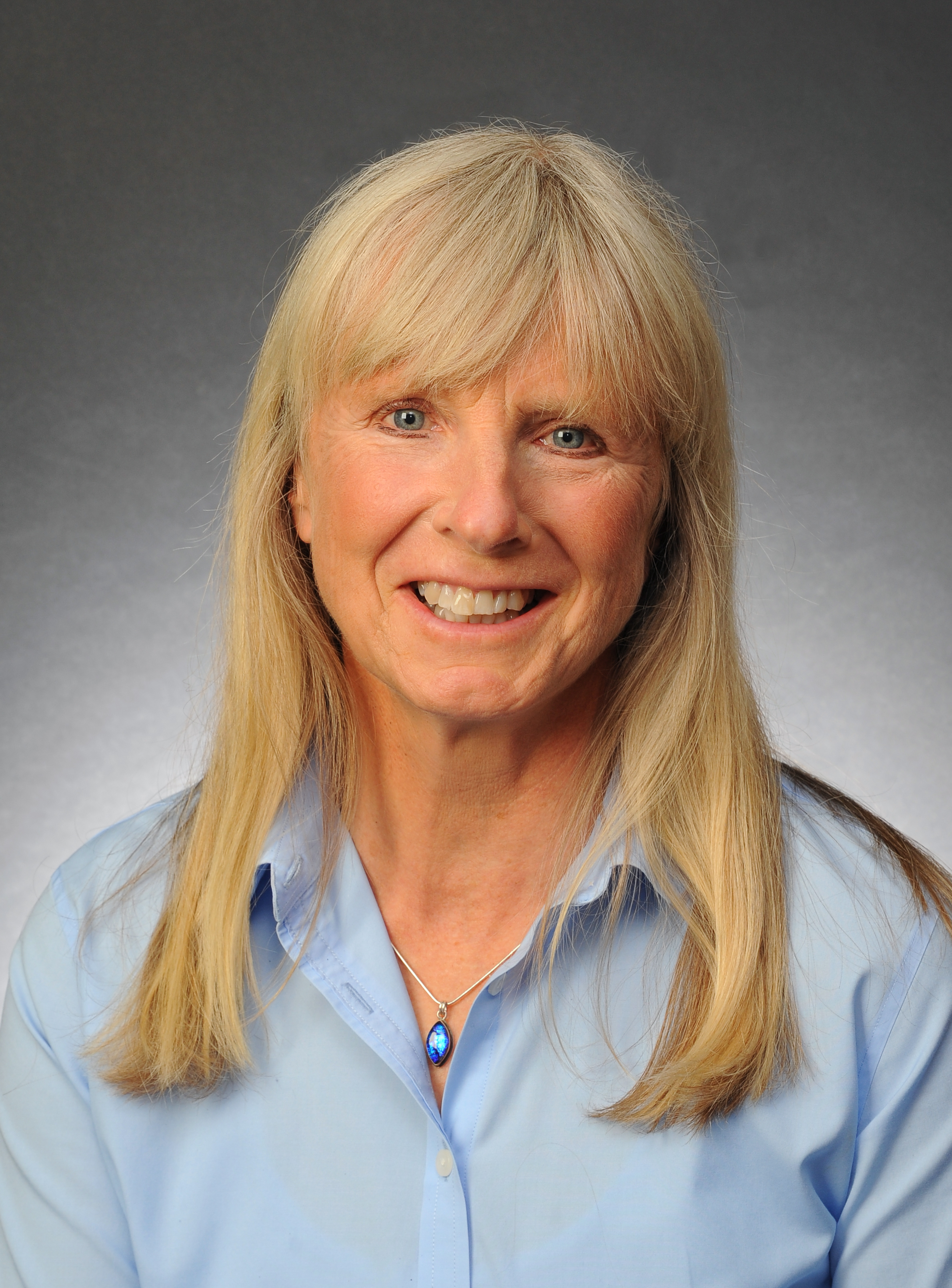
Claudia G. Currie
Claudia doesn't need an introduction
to most BIO-OA members or staff at BIO. The list of contributions she has made to the BIO community is long. Her most recent accomplishment was organizing the very memorable,
and skillfully executed events around the BIO 50th Anniversary Celebrations throughout 2012.
An early contribution mentioned in her nomination documentation was as Exhibits Co-chair for the 1998 BIO Open House.
She made "sure exhibits that were included were of the highest calibre, and best reflected the diversity of the work undertaken at BIO."
Claudia was one of the organizers and energetic promoters of the Hypatia Project at BIO. This project was a partnership of public and private sectors in Nova Scotia
that was formed to design and implement strategies to improve the representation of women in science and technology (S&T).
The Hypatia Project welcomed BIO as its first workplace site in October 2001.
Claudia was "one of the key leaders for the BIO portion of the annual Parker [Street] Christmas Dinner Program" that assembled and
delivered more than 1,200 Christmas dinner food boxes to needy
families across HRM in recent years. BIO staff have been credited with its success through their participation over many years.
Claudia is an active competitive water skier, volunteer-ing for the Nova Scotia Water Skier Association, and a medal winner at national competitions.
One aspect of Claudia's contributions in the nomination documentation that did not receive much emphasis was her contributions to the scientific mission of BIO.
Claudia's official job title is Marine Geology Technologist, specializing in the collection and storage of data, metadata, Geographic Information Systems (GIS),
Computer Aided Drafting (CAD), support of geologic map production, online access to information, and contributing to various scientific marine and energy project
outputs. Her contribution to the science at BIO is not fully represented by her job title. Readers may remember her article "Going to Sea – Some Personal Reminiscences"
published in VoicePipe 56 (October 2012). The article describes, with her typical good humour, her exploits at sea serving science. In this article, she recognizes
many people who supported and mentored her during her career.
Her nomination document ends with "Claudia is especially valuable to the BIO community because of her boundless energy and ability to see how issues are actually opportunities to
promote BIO in the most positive light to the general public and HRM in particular."
Phil Moir (a past supervisor) described Claudia in 2006 "as one of those rare people that recognizes the value of people
as individuals, and takes the time to develop relationships and partnerships. It is through these relation-ships that the
fabric of... BIO is strong and the work-place a success."
|
Robert J. Murphy, 2013
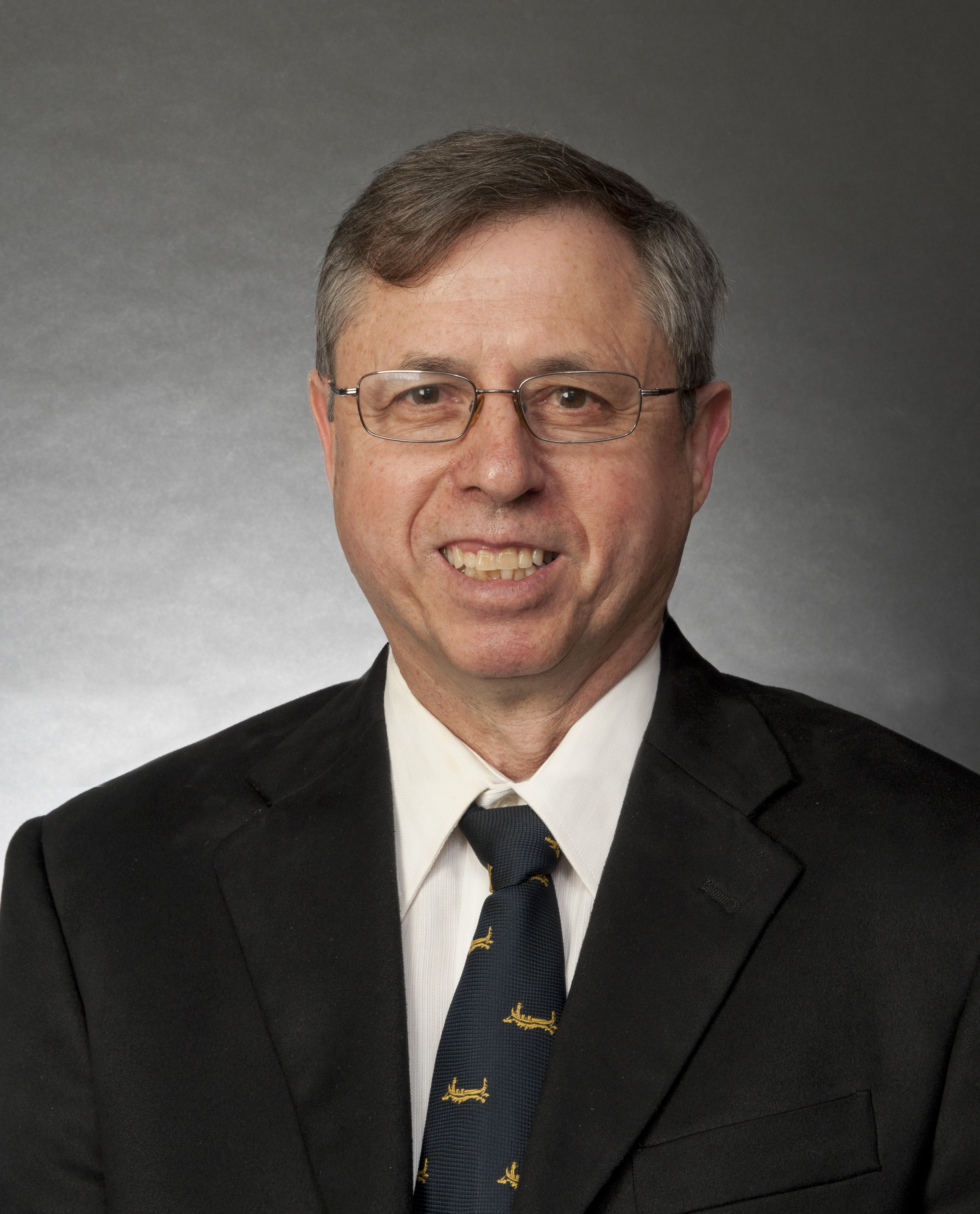
Robert J. Murphy.
As Bob likes to say, he was "born at an early age", and raised in north-end Halifax , one of 13 children.
His first job as a "brush hand" (a painter's helper) at the Halifax dockyards had him applying the primer coat on submarines.
Then Bob crossed the harbour to Bedford Institute to work for Mines and Technical Surveys where his very first task was to
paint the Vulcan building workshop floor. His work ethic impressed his supervisor (Keith Manchester) enough to keep him on
and, lucky for us, Bob remained. Starting as an assistant to coring techs Mike Gorveatt and Lyle Brown, "Murph", as he became known,
learned all there is to know about marine sampling, but especially sediment coring.
Forty one years later, Bob is the Geological Survey's senior marine sampling technician and no GSC Atlantic scientist wants to go
in the field without him. In addition to his technical prowess, his contribution to every mission's success comes from a profound
sense of purpose and community. The strong bonds he has forged and continues to maintain between science staff and ship's crew have
not only ensured operational successes over the years but have fostered goodwill and an emotional investment for all involved in
the mission that transcends a mere "job". Indeed, letters in support of Bob's nomination came from NRCan and DFO managers, Coast Guard
officers and crew, friends and colleagues. As the letter of support written by the crew of CCGS Hudson states "when the vessel is coming
in and we require a linesman, he will gladly accept the task. Once tied up he will volunteer any assistance for what might be required for
that day. He does all of this not out of a work obligation, but because he values the vessel and its crew. He does it all because he cares and
he accomplishes it with a smile."
Back on shore, if there is something you need, Bob's your man. No job is too messy for him. If he can't do it he knows who can.
If he can't find it, it probably doesn't exist. As well, Murph is the go-to guy for BIO's many social and charity activities,
always working behind the scenes. Whether it is the GCWCC charity fundraiser, Open House logistics, Huntsman Award ceremonies,
or the heavy lifting for the Parker Street Christmas Food project, you will find Bob getting the job done.
It is somehow fitting that Bob's professional expertise is in the collection of sediment cores. Because he is at the core
of what makes BIO special: the people. It's Bob's special gift and it makes him especially worthy of this prestigious award.
He helps to make BIO a great workplace for us all.
|
Don Gordon, 2012
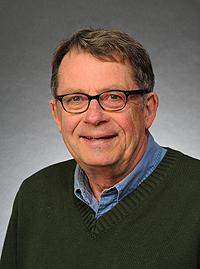
Dr. Donald Gordon began his career at Bedford Institute of Oceanography in the early 1970s as the leader of a new pollution research unit
at the Marine Ecology Laboratory. Don led the formation of the Marine Environmental Quality Division that focused its attention on the impacts of
the Arrow tanker oil spill in Chedabucto Bay. He led the formation of an Atlantic zone working group on oil pollution that met regularly to share
research results and discuss priorities and issues that required collaborative research. This was to be Don's trademark - his ability to bring
people together and achieve a remarkable synergy.
In the decades that followed Don focussed his efforts as a researcher and team leader on numerous important issues:
- He led an effort studying impacts of tidal power development in the Bay of Fundy involving scientists from federal science departments, universities and international partners.
- He helped to maintain and reorganize research groups as the department went through a period of program review and reduction with the disbanding of the Marine Ecology laboratory.
- Don led a scientific review to evaluate the potential impacts of exploratory drilling on Georges Bank; work that was instrumental in a moratorium being placed on oil exploration on the Bank and the subsequent development of a comprehensive research program to fill the identified gaps in our knowledge about the Georges Bank ecosystem.
- He studied the impact of particulates from the drilling wastes on sea scallops eventually leading to an interdisciplinary program to model the fate and distribution
of these materials and thereby evaluating their potential impact; also leading the DFO effort to communicate research findings to the communities that were concerned
about the potential exploration activity.
- He led a multidisciplinary team examining the impacts of mobile fishing gear on benthic communities, bringing together expertise from numerous divisions of
DFO, NRCan, private industry and the Canadian Hydrographic Service, resulting in major advances in the design of instruments to collect samples and information from the ocean bottom.
During retirement Don continues to make a strong contribution to the Institute. He has been Vice President of the BIO Oceans Association; and during the past two years
has led an editorial team to produce a history of the Institute, as part of the 2012 50th anniversary celebrations. His leadership has been critical to the scope and
organization of the volume. In addition Don is a long serving member of the Dartmouth Lakes Advisory Board where he has contributed his scientific knowledge to the
protection of the water quality of the Dartmouth Lakes.
Through Don's broad range of collaboration with scientists and stakeholders from federal departments, provincial agencies,
universities and the international community, he has made enormous contributions to the Institute over four decades as a scientist,
research manager, and emeritus. Oceans Association heartily congratulates Dr. Gordon on winning the 2012 Beluga Award!
|
Brian Beanlands, 2011
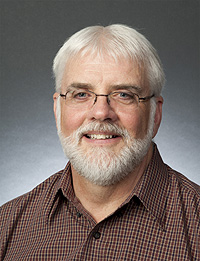
A native of Armdale, Brian Beanlands first attended South Armdale School (now the Chocolate Lake Centre) and then Halifax West High School. He pursued post-secondary studies at the Nova Scotia Institute of Technology (NSIT), graduating in 1974. He subsequently worked two years for MT&T, but his time as a summer student with Defence Research Establishment Atlantic (now DRDC) aboard the QUEST foreshadowed his future in oceanography.
Brian spent the latter part of the decade working on term here at the Bedford Institute of Oceanography (BIO) and at the National Research Council in Halifax. He spent a year with HUNTEC, much of that time spent at sea on the Grand Banks as a field technician.
Finally, in 1980, Brian came to BIO to stay. He was instrumental in the success of many projects: the Optical Plankton Counter, Laser Plankton Counter, Seahorse, and was project leader on the development of one of the first instrumented blocks. There were countless technical problems requiring innovative solutions: in situ pumping systems to collect sparsely distributed micro-organisms in deep water, the Moving Vessel Profiler to collect water column acoustic velocity profiles while underway, and the Icycler, a smart, neutrally buoyant, ultra-efficient moored water profiler that would work beneath the ice for year at a time, collecting salinity data in the high Arctic. More recent work has focussed on SeaCycler, Watson compasses and real-time telemetry in Barrow Strait.
Brian's dedication to the job at hand, regardless of the effort necessary or the potential for recognition, has always been motivated by a strong sense of teamwork and the satisfaction of finding creative solutions to seemingly impossible challenges. His collaborative nature and infectious positive attitude extend beyond the walls of the institute in the facilitation of technology transfer to the private sector and his mentorship of students as a member of the NSIT Program Advisory Committee.
Brian takes part in the BIO social scene as well through participation in the Parker Street Christmas Dinner delivery program and his membership in the unofficial BIO swim team. Brian embodies all of the qualities that the Beluga Award seeks to celebrate: teamwork, cooperation, dedication to community spirit, unselfish effort, and exceptional contributions to the success of BIO projects. In the words of George Fowler, a long-time friend and colleague "Everyone loves working with Brian and it's apparent from what he says and does that he loves working here at BIO. Aren't we lucky!"
|
Sherry Niven, 2010

Born in Halifax, Sherry Niven grew up in the Annapolis valley in Middleton, Nova Scotia. She earned her BSc in chemistry from Dalhousie University.
It was during this time that she first came to the Bedford Institute of Oceanography (BIO) working as a coop student with for Dale Buckley.
After two more work terms, and a cruise to the Nares Abyssal Plain, Sherry had fallen in love with oceanography. She returned to Dalhousie for a PhD. in
chemical oceanography and, promptly began working as a research scientist with the DFO Marine Chemistry Group using radio isotopes as tracers.
Developing her well-known reputation for effectiveness as a team player, Sherry began working with biological oceanographers on projects like the Joint
Global Ocean Flux Study (JGOFS) to understand the controls on the concentrations and fluxes of carbon and associated nutrients in the ocean.
After 10 years of working as a research scientist at BIO, Sherry became involved in consultations to develop classification models for scientists
under the ill-fated UCS initiative. For Sherry, this was a turning point: the beginning of collaborative work that ultimately expanded beyond management
and labour interests and into academia. She subsequently went on assignment with NSERC to work towards increasing government-university interaction
in science and to encourage students to consider careers in science.
Previous involvement in regional women.s organizations led to the hosting of the Hypatia workshop at BIO, a session exploring the realities for women in science
in federal laboratories. The resulting work-plan gained national attention and provided a springboard for discussions on workplace issues that continue today.
The Hypatia themes of "Community and Diversity" echo Sherry's sensibilities. Her recent efforts in relocating staff displaced by ongoing renovations of the
BIO Campus bear this out. This work, along with service on committees and her many other duties, she quietly performs with professionalism, sensitivity
and warmth, making her an ideal candidate for the Beluga Award. Her cheerful demeanor and understated competence belie her commitment to ensuring
that BIO remains a great place to work. It is with great pleasure that the BIO Oceans Association presents the 2010 Beluga Award to Sherry Niven.
.
|
Bruce Anderson, 2009

A native of Dartmouth, Nova Scotia, Bruce
Anderson graduated from Dartmouth High School. He
attended Saint Mary’s University where he earned a
Bachelor of Arts degree with an Honours Certificate in
Geography. He further completed his education
within the Canadian Hydrographic Service with courses in
Field Surveys and Marine Cartography. His association with the Bedford
Institute of Oceanography (BIO) began in 1984 with
temporary employment.In 1985, he was hired to work
as Cartographer with the Canadian Hydrographic
Service.From 1988 to 1996, he worked in various
capacities with the Atlantic Geoscience Centre,the
Management Services Branch, and the Marine Fish
Division. Since 1996, he has served as a Multi-Disciplinary
Hydrographer with the Canadian Hydrographic Service
Bruce is special because of his pleasant personality, and
his continuing willingness to serve on work, health and
safety, union, Public Service Week, gift shop, and social
committees for the betterment of BIO as a workplace and
as a major Canadian Scientific Institution.Bruce's
enthusiastic ‘‘can do ’’ attitude is
a key factor in assembling and inspiring volunteers who
make successes out of events like the Canadian
Hydrographic Association International Hydrographic
Conference in 2006. He has served on the organizing
Committees of BIO Open Houses in 1998, 2002, and 2007.
For more than twenty years, Bruce has cooperated with BIO
staff from most organizational units
and has gained knowledge of several scientific and
technical disciplines. His enthusiasm can always be
counted on to give guided tours to groups of foreign
visitors and dignitaries. He has been and continues to be
a positive influence for the type of cooperation and
success that enhances the very concept of the Institute.
Bruce is being recognized for his special
contributions to the internal life of BIO and to the
Outreach initiatives that present the Bedford Institute
of Oceanography to Canadian Society and to the World. It
is with great pleasure that the Ocean Association
presents the 2009 Beluga Award to Bruce Anderson
.
|
Borden Chapman, 2008

Borden Chapman began his work association with BIO in the early 1970.s when he was hired as a summer student in electronic technology from the Nova Scotia Institute of Technology. After graduation from NSIT in 1972 Borden worked as a junior electrician on CSS HUDSON, then later in 1975 he became an electronic technician at the Atlantic Geoscience Center (Geological Survey of Canada, Atlantic). His main responsibilities were to maintain the electronic components of the seismic instruments as well as other geological equipment.
Borden soon demonstrated unusual talent in diversified ways, including teaching evening courses at NSIT, working on electronic systems on oceanographic and Department of Transport ships, and providing repair and maintenance expertise on a wide variety of electronic equipment used at sea and in the laboratory. He also provided program support to field programs carried out in Sri Lanka, the high Canadian Arctic and the deep sea. His most appreciated attributes include his willingness to cooperate with a wide variety of scientific projects, applying his considerable skills to maintaining innovative prototype electronic equipment and solving problems with conventional radio and computer systems.
In recent years Borden has been designing, purchasing, installing and testing a large variety of multichannel reflection seismic equipment on the CCGS Louis St. Laurent, Canada.s largest icebreaker. This equipment will allow Canada to map the offshore in Canada.s high Arctic as required for Canada to meet its Law of the Sea obligations. Initial results of a survey carried out in 2007 were very good in ice-covered waters, with some experts proclaiming these data to be of the best quality ever obtained from the area.
Contributions made by an outstanding technician can contribute manifestly to the success of any scientific project. In the case of Borden Chapman he has not only made supporting contributions, he has lead the way in making technical innovations that make possible new discoveries.
.
|
Murray Scotney, 2007

Murray Scotney began his career at BIO as an Electronic Technologist in July 1969 with the Atlantic Oceanographic Laboratory, Applied Oceanography Section. He was the first Electronics Technologist hired to maintain and deploy the growing inventory of electro- mechanical physical oceanographic instruments that were becoming available.
Technology has changed significantly over the last four decades and Murray has kept abreast of the changing requirements of scientific programs and the availability of instrumentation to fulfill those needs. For example, current meters have evolved from mechanical instruments with rotors or propellers through electro-magnetic sensors to acoustic single-point and profiling instruments. Over the years, deployment times have increased from durations of a few weeks to two years due to the improved reliability of data-recording instruments, acoustic releases, and mooring components. Murray has been a senior member of a team involved in the design, evaluation, purchase, operation, maintenance, and adaptation of these new instruments into the physical oceanographic program.
Murray approaches his job with a high level of professionalism and has generated a great deal of respect for his work-skills and personality. He has always played a vital role in the organization especially during the last decade of significant downsizing when he assumed many additional technical, personnel, and managerial responsibilities at BIO and in the field. His work ethic and leadership have enabled us to continue to support field programs which are essential to carrying out our science projects and monitoring responsibilities. During this time period, Murray.s conscientiousness has ensured that we were successful in achieving our goals.
As an example of his work load, Murray, over the past field season participated in field programs located at or on the Sable Gully, the Scotian Shelf, Hibernia, Lunenburg Bay, Labrador Sea, Makkovik Bank, Barrow Strait, Davis Strait, Bay of Fundy, Gulf of St. Lawrence, and Northumberland Strait, as well as several near-shore programs. As our field support has undergone renewal in the past two years, Murray has served as a mentor and teacher for our new technical support staff. Murray.s patience and substantial experience have been crucial in bringing these new technicians up-to-speed to ensure that we will continue to have excellent field programs.
Murray is an invaluable member of our team whose interest in the success of science programs is clearly evident. He not only understands the technical requirements of these programs, but also takes interest in understanding the science as well. He listens intently to the needs of research scientists and is able to provide advice on how to apply these requirements in the field. Murray.s opinion is widely respected by field-going staff in the Ocean Sciences Division. He is not only very adept at conversing with scientific staff but is also very capable of discussing program requirements with the officers and crew of our research vessels. His humour, wit, patience and smarts are often the key to seeing the way through difficult situations . to the great relief of everyone. He is a most deserving recipient of this award.
.
|
Joe Bray, 2006
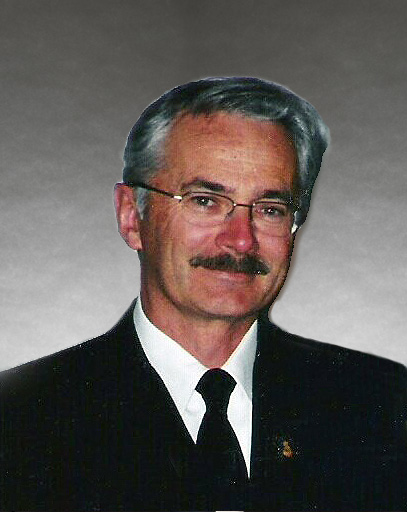
Joe Bray, from Canso NS joined the Canadian Hydrographic Service in 1968 as a hydrographic launch coxswain on CSS Kapuskasing. After five years aboard the Kapuskasing, Joe served aboard CSS Dawson and CSS Baffin before he joined the hydrographic shore party and operated survey launches in Cape Breton and Newfoundland. After obtaining a Mate.s ticket, he served on the charter vessel, Martin Karlsen and subsequently signed on as mate aboard the CSS Maxwell. Following his service on the Maxwell, Joe sailed aboard CSS Dawson, CSS Hudson and CSS FTG Smith before taking command of the MV Navicula in 1989. Joe served as captain of the MV Navicula for 14 years before she was retired in 2003. Since then, he has skippered the fisheries patrol vessel CCGS Point Caveau stationed off northwest Nova Scotia.
Over the years it has become widely known that Joe is friendly, competent, cooperative and considerate. He is a model skipper being held in high esteem by his crew. His consideration for others has taken many forms: he invariably gave first choice of leave to his crew before taking his own; he would work on a piece of equipment for you over a weekend to make sure it was ready for the next week.s work; he was always sympathetic to anyone suffering from seasickness providing medication if needed. Those who have worked with Joe over the years could come up with many more examples of these little .extras. that endeared him to his colleagues.
To whomever was scientist-in-charge, it soon became clear that Joe was an essential part of the scientific team. His ingenuity in solving gear deployment problems ensured the success of many an otherwise .doubtful. cruise. Never content to just remain behind the wheel providing taxi service to and from the study site, Joe displayed a keen interest in the project-at-hand throughout his career. This admirable quality began with making transit readings to assist a survey team in the Arctic and has continued since, most recently aboard Navicula, with helping sort the species in a groundfish catch. During these fishing trips, Joe voluntarily kept his own detailed records of the work carried out. These included measurements of the trawl net dimensions, annotations on hydrographic charts regarding tear ups, bottom type, quantity of major species caught, and electronic records of set locations. All of this was done without request from the chief scientist SIC (oh, above I thought you meant as it was written). Joe is also known for his ingenuity in devising ways of deploying and retrieving the unusual scientific sampling devices brought aboard his vessel. No piece of gear fazed him; some devices might invoke a smile and a raised eyebrow, but if Joe couldn.t make it work, no one could! His advice on accomplishing the task at hand is ever timely and useful.
The ships. officers and crews manning our research vessels have played a major role in the success of BIO research. The international reputation of the Institute is owed in no small way to these unsung heroes. In epitomizing this dedication and professionalism, they could not wish for a better person to represent them.
.
|
Jacqueline Dale , 2005

Jacqueline Dale graduated with a Bachelor of Science in Chemistry from Dalhousie University (Kings College) in 1952 and her career began at the Biochemistry Laboratory of the Victoria General Hospital in Halifax where she worked for three years.
In 1971 Jackie joined the Environmental Quality Division of the Marine Ecology Laboratory (MEL) of BIO. Her time was shared, working as a pesticide chemist for Richard Addison and as a chemical oceanographer with Don Gordon and Paul Keizer. In those early days, along with Ann Orr, she was one of the first women to be "allowed" by Martin Blaxland, to wear trousers to work. In MEL, she was involved in a large number of research projects including pesticide chemistry, hydrocarbon chemistry, the distribution of hydrocarbons in seawater and sediments, and the ecological effects and fates of oil spills, with particular focus on the Arrow spill of 1970 in Chedabucto Bay. In the late 70s and early 80s, she worked as part of a large team of BIO scientists investigating the Bay of Fundy ecosystem to understand more fully the potential impacts of tidal power development. Jackie participated in a series of projects studying sedimentology, nutrients, primary production and organic carbon cycling. This involved collaboration with other government departments and universities. Sample collections were made from a helicopter, ship, small boat, vehicle, or on foot while tramping over mudflats during all seasons of the year. Jackie handled it all. Her important contributions to MEL.s research programs are evident by the number of scientific papers and reports that carry her name and are still cited.
In the 80s, Jackie also organized conferences. In 1981, with Don Gordon, she coordinated the Symposium on the Dynamics of Turbid Coastal Environments. In 1989, with Carl Amos, she coordinated the Canadian Continental Shelf Seabed Symposium and, in 1996, she was a member of the organizing committee for the Canadian Hydrographic Conference. For the better part of ten years Jackie served as coordinator for the annual A.G. Huntsman Award given internationally for excellence in Oceanography. This involved working with all components of BIO, the Royal Society of Canada, as well as with universities and local businesses, thereby heightening the BIO profile in the international scientific community.
In 1981, Jackie became the administrative assistant to Ken Mann, the Director of MEL -. In this capacity, her finesse with people and her intuitive diplomacy helped manage those independent spirits in MEL and keep their finances in the black. During this period, Jackie also worked diligently on her own time to complete a Masters in Business Administration. Thus in 1987, when MEL was disbanded, Jackie was ready to assume new responsibilities with the Financial Planning for Science group. She was never intimidated by the job, but the move away from BIO to an office in Halifax was unsettling. Jackie never passed up an opportunity to work with friends at BIO even if it meant dressing up as a penguin, a reindeer, or a chorus-line gal for the Christmas Variety shows in support of the United Way Campaign.
Jackie officially retired in June 1991 but almost immediately moved back to a desk at BIO to work with Brian Nicholls in preparation for the Coastal Zone Canada .94 conference. The conference was a resounding success and again brought much international recognition to BIO. Following the conference, as part of the Coastal Zone Canada Association, Jackie set up the secretariat office and became the coordinator. Jackie remains actively involved through the BIO-Oceans Association, of which she is a founding member.
.
|
Dave McKeown, 2004
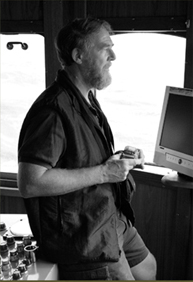
Over his outstanding 35 year career at BIO, Dave McKeown has realized or led many innovative engineering developments in hydrographic surveying, fisheries research, coastal ocean science, marine emergency response, and environmental assessment.
In his role as a leader or participant in multidisciplinary seagoing expeditions as well as in his shore-based work in the management of Institute facilities and the oceanographic fleet, he was known for his hard working, generous and fair spirit while keeping the overall best interests of the organization in mind. His unfailing and enthusiastic support of research and survey projects across all disciplines and divisions at BIO is widely acknowledged by his colleagues, both past and present.
Born in Vancouver, Dave attended Mount Allison University and the Technical University of Nova Scotia, where he obtained a Masters Degree in electrical engineering in 1963. An Athlone Fellowship then took him to Cambridge University where he obtained a Ph.D. in electrical engineering. After graduation, he remained at the University for several years as a Senior Research Assistant in the Geodesy and Geophysics department.
In 1968 Dave joined the Engineering Services Section at BIO and, over the next 35 years, occupied a variety of key positions: Head of the Electronic Design Section of Metrology Division; Head of Metrology Division; Head of the Coastal Oceanography Division; and, simultaneously, Science Vessel Coordinator for the Maritimes Region, manager of the Atlantic Zone Science Platform Committee, Head of Technical Operations, and manager responsible for space allocation.
During his early years at BIO, Dave led teams developing the application of underwater sound to acoustic navigation, the use of lead acid batteries as a possible power source for experiments in the deep ocean, and a remotely controlled launch for hydrographic surveys, a predecessor to the DOLPHIN and ARCS projects. He has contributed to the development of a variety of instruments used to study benthic habitats such as the TowCam, the Video Grab, and Campod. Over several years, Dave undertook development of "Sea Rover", a mechanized bottom crawler that was designed to measure the amount of heavy oil remaining in the fuel tank of the sunken barge "Irving Whale" in order to determine if leaks were occurring.
Dave.s unselfishness is particularly evident in his work at sea where he has often served as chief scientist on multidisciplinary expeditions over the continental shelf and the deep sea. He has fostered the concept of the annual "Metrology Cruise" where new instruments and technology could be tested and evaluated. These expeditions often involved enhancing the surveys or experiments of scientists from several different organizations.
In the latter years of his career, Dave undertook administrative tasks such as the allocation of ship time for the research and survey fleet, and of office and laboratory space in the BIO complex. In carrying out these tasks, he managed to respect the programs and priorities of the Institute while doing his best to come up with fair, unbiased, and objective solutions. In this he succeeded admirably and was seen by all sides as an honest and fair broker.
During his career in the Public Service, Dave has received a DFO merit award (1987), the ADM Commendation Award (2001), and in 2002 the DM Prix d'Excellence. The latter award was presented jointly to Ms. Lenore Bajona and Dave for their development of a computerized ship-time request system that vastly improved the previous manual system and continues to be used to this day. Dave is now formally retired from the Public Service but he is continuing to contribute as an Emeritus Scientist at BIO. He has made numerous, significant contributions to Institute-wide programs over many years and is a most deserving recipient of the Beluga Award.
.
|
Art Cosgrove, 2003

Art Cosgrove, head of BIO.s Drafting and Illustrations Group, has been at the cutting edge of scientific illustration from the early .pen & ink. days to today.s world of computer-generated graphics. Since 1970, he has had a guiding and creative hand in illustrating documents, posters, and displays for scientific publications and for public relations and educational purposes and has displayed an unusually high and unselfish dedication to the projects, contributing significantly to their success.
Art started his career at BIO in November 1970 as a draftsman on a three-month term. His job was to prepare illustrations depicting results from studies following the oil spill from the ship Arrow in Chedabucto Bay. Six months later he became a full-time employee and in 1977 became the head of the Group.
Art became indispensable to scientists from all departments and to the Open Houses that demanded the design and production of hundreds of posters. He has led the group through a number of major transitions in the techniques of scientific illustration, as well as demanding and important projects at BIO. These have included projects such as BIO.s annual and biennial science reviews, wall charts, and contributions to notable projects such as the scientific illustrations for the Georges Bank.Gulf of Maine boundary dispute and Canadian contribution to the Decade of North American Geology publication project commemorating the 1988 centenary of the Geological Society of America. Most striking, however, has been his unceasing desire and dedication to help the scientific staff.
The zeal to give and assist has never faltered despite the obstacles of massive technological change and resource reduction, a vivid testimony to Art.s invaluable contribution to the BIO community over three decades.
.
|
Peter Vass, 2002
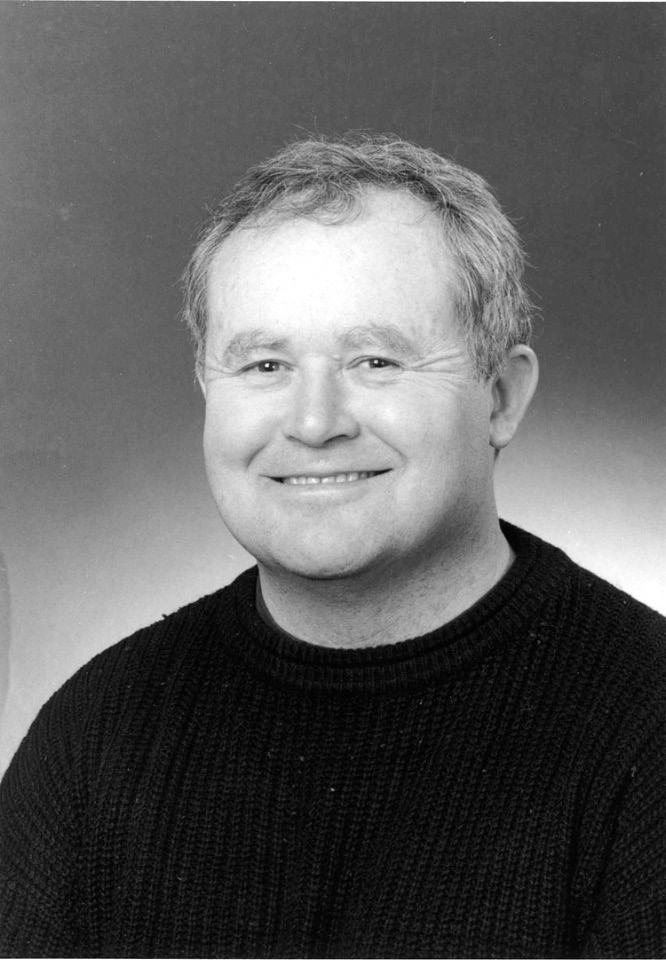
Upon graduation in 1970 the University of New Brunswick, Peter joined the Marine Ecology Laboratory at the Bedford Institute of Oceanography. Assisting in studies of the fate and effects of organochlorines (OC) in the marine environment, Peter was presented with opportunities to develop new equipment. His combination of technical and scientific understanding led him to the successful design of holding chambers for experiments on zooplankton-phytoplankton OC uptake and loss. In the mid to late 70s, as a member of the St. Georges Bay ecosystem study group, he designed and modified plankton nets and sorting machines, and created traps for collecting vertically migrating organisms in the Bay. Later in the 1980s, he developed a revolutionary electronic trawl for larval lobster research.
His involvement in CESAR (Canadian Expedition to Study the Arctic Ridge) resulted in his development of specialized gear ranging from winches and sleds to styrofoam toilet seats. The 1990s brought a return to St. Georges Bay for a more extensive organochlorine study and the design of rain traps and snow melting devices. His participation in research cruises to study the impacts of mobile fishing gear and release of drilling wastes on the continental shelf led to innovations in equipment for sampling and imaging seabed habitat and communities.
Since 2000 Peter has conducted field research on methylmercury biomagnification in the Bay of Fundy and continues to be part of the deep-sea trawling impacts study which has evolved to include deep-sea coral research and habitat mapping.
The application of his mechanical, technical and scientific abilities has resulted in his playing a central role in design, fabrication, maintenance and deployment of a variety of oceanographic sampling equipment used at BIO. His leadership in coordinating field efforts in research programs resulted in highly successful applications such as the use of the BIO-developed bottom video grab in the survey operation in support of the recovery of remains of Swiss Air Flight 111 which crashed near Peggy.s Cove, Sept. 2, 1998.
.
|
Roger Belanger, 2001

Roger, a native of Nouvelle, Gasp , Qu bec, began a career in photography in the Royal Canadian Air Force which he joined in 1955. He worked with photo reconnaissance units for 11 years before moving to the photographic unit at the Bedford Institute of Oceanography in 1966. Roger worked "well beyond his official duties - both during work hours and outside them." This characteristic was exhibited in numerous research projects such as the geophysical study of the Mid-Atlantic-Ridge and a multidisciplinary project in the Caribbean. In his first decade at BIO, Roger expanded his photographic techniques to include applications using scuba equipment.
After the oil spill from the tanker Arrow in Chedabucto Bay in 1970, Roger was involved in photographic documentation of the immediate impact of the spill, as well as follow up studies over the next two decades. He was also instrumental in developing photographic techniques for sampling programs in the Canso Strait Environmental Marine Geology Study in 1973. Studies of sediment dynamics in the Magdalen Islands (1975-76) and Martinique Beach were enhanced by Roger's photographic contributions.
Roger's several Arctic experiences included expeditions with CSS Hudson and Baffin in 1970, 1977, 1978 and 1980. He also participated with Norm Fenerty in the LOREX experiments (1979) on an ice camp to develop a system to lower and recover deep-sea cameras through the ice.
Roger made a number of innovative contributions to oceanographic photography and TV imaging using scuba. He was involved in developing photographic and electronic imaging technology from submarines and remote operated submersibles. He helped to develop a photographic system for remotely monitoring sediment movement in intertidal areas of the Bay of Fundy using a tethered balloon. In the later years of his career he developed a photographic system used on Coast Guard helicopters to document coastal features, oil spills, coastal erosion, and sewage effluents.
Roger has worked with BIO staff from all organizational units and all scientific and technical disciplines. He was a positive influence for cooperation and success that enhanced the concept of the Institute.
.
|
|
|

